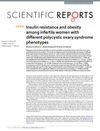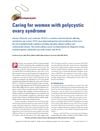History of Discovery of Polycystic Ovary Syndrome
June 2017
in “
Advances in Clinical and Experimental Medicine
”

TLDR Polycystic ovary syndrome (PCOS) was first described in 1721, officially diagnosed in the 1990s, and is now known to be partly genetic and linked to insulin resistance, with increased risk of cardiovascular disease and carbohydrate metabolism issues.
The review article from 2017 discussed the history of the discovery of polycystic ovary syndrome (PCOS). The first known description of PCOS was by Italian scientist Vallisneri in 1721, but it was Stein and Leventhal who are often credited as the first investigators of the condition. Formal diagnostic criteria for PCOS were not proposed until the early 1990s at a National Institute of Health (NIH) sponsored conference. The pathophysiology of PCOS is now understood to be multifactorial and partly genetic, with insulin resistance noted consistently among many women with the condition, especially those with hyperandrogenism. The article also highlighted that there is strong evidence that cardiovascular disease risk factors and disturbances in carbohydrate metabolism are increased in patients with PCOS compared to the healthy population. The diagnostic criteria established by the Rotterdam ESHRE/ASRM – Sponsored PCOS Consensus Workshop Group in 2003, known as the "Rotterdam criteria", are now obligatory and incorporate the size and morphology of the ovary as determined by an ultrasound.

